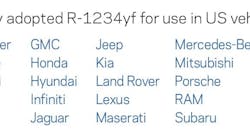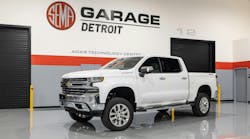As part of the Obama Administration's ongoing efforts to increase fuel efficiency, reduce carbon pollution, and address climate change, the U.S. Energy Department and the Environmental Protection Agency (EPA) released a new label that features EPA fuel economy estimates and CO2 estimates for used vehicles sold in the United States since 1984.
Consumers may create the new label electronically as part of a new tool on FuelEconomy.gov. This electronic graphic can be downloaded and included in online advertisements on the web, while the paper label may be printed and affixed to the vehicle window. As a vehicle's fuel economy changes very little over a typical 15-year life with proper maintenance, the original EPA fuel economy estimate remains the best indicator of a used vehicle's average gas mileage.
"Fuel efficient vehicles cut carbon pollution, reduce our dependence on foreign oil, and help American families and businesses save money," said Assistant Secretary for Energy Efficiency and Renewable Energy David Danielson. "The new fuel economy label gives consumers an easy, quick way to get the information they need to find the used vehicle that's right for them."
"Making fuel economy information more easily accessible can help Americans save money at the gas pump and reduce carbon pollution," said EPA Acting Administrator for Air and Radiation Janet McCabe. "Buying any vehicle is an investment, and the information on these labels will help consumers make informed decisions and calculate the cost of ownership."
The Obama Administration has taken unprecedented steps to improve the fuel efficiency of vehicles sold in the United States, establishing the toughest fuel economy standards for passenger vehicles in U.S. history. These standards are expected to save consumers $1.7 trillion at the pump—or more than $8,000 in costs over the lifetime of each vehicle—and eliminate six billion metric tons of carbon pollution.
All new vehicles now include a comprehensive fuel economy and environmental window sticker from the U.S. Environmental Protection Agency, including passenger vehicles that meet the new fuel economy standards. With the FuelEconomy.gov tool, used vehicle sellers can provide potential buyers with comparable fuel economy information. Last year, over 40 million used cars were sold in the United States—roughly three times the number of new cars sold in 2012.
Used vehicle information will also be available on FuelEconomy.gov in addition to annual fuel cost and petroleum use estimates. Individual fuel economy will vary for many reasons.

